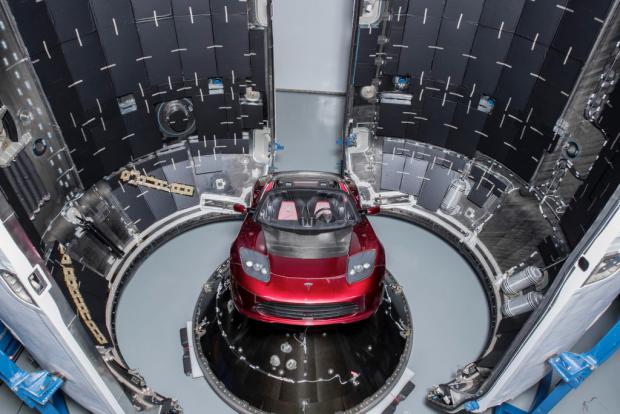
Breaking News
DRINK 1 CUP Before Bed for a Smaller Waist
 Nano-magnets may defeat bone cancer and help you heal
Nano-magnets may defeat bone cancer and help you heal
 Dan Bongino Officially Leaves FBI After One-Year Tenure, Says Time at the Bureau Was...
Dan Bongino Officially Leaves FBI After One-Year Tenure, Says Time at the Bureau Was...
 WATCH: Maduro Speaks as He's Perp Walked Through DEA Headquarters in New York
WATCH: Maduro Speaks as He's Perp Walked Through DEA Headquarters in New York
Top Tech News
 Laser weapons go mobile on US Army small vehicles
Laser weapons go mobile on US Army small vehicles
 EngineAI T800: Born to Disrupt! #EngineAI #robotics #newtechnology #newproduct
EngineAI T800: Born to Disrupt! #EngineAI #robotics #newtechnology #newproduct
 This Silicon Anode Breakthrough Could Mark A Turning Point For EV Batteries [Update]
This Silicon Anode Breakthrough Could Mark A Turning Point For EV Batteries [Update]
 Travel gadget promises to dry and iron your clothes – totally hands-free
Travel gadget promises to dry and iron your clothes – totally hands-free
 Perfect Aircrete, Kitchen Ingredients.
Perfect Aircrete, Kitchen Ingredients.
 Futuristic pixel-raising display lets you feel what's onscreen
Futuristic pixel-raising display lets you feel what's onscreen
 Cutting-Edge Facility Generates Pure Water and Hydrogen Fuel from Seawater for Mere Pennies
Cutting-Edge Facility Generates Pure Water and Hydrogen Fuel from Seawater for Mere Pennies
 This tiny dev board is packed with features for ambitious makers
This tiny dev board is packed with features for ambitious makers
 Scientists Discover Gel to Regrow Tooth Enamel
Scientists Discover Gel to Regrow Tooth Enamel
 Vitamin C and Dandelion Root Killing Cancer Cells -- as Former CDC Director Calls for COVID-19...
Vitamin C and Dandelion Root Killing Cancer Cells -- as Former CDC Director Calls for COVID-19...
Tesla making Model 3 battery packs in 17 minutes down from 7 hours

This still remains to be fixed, but in any case, overgeneralizing the design. For example, the current battery pack has a port for front drive units, which we then put a steel blanking plate on. So essentially, we punched a hole in it and put a blanking plate at the hole. And (we had to) do that for all rear drive unit cars, which is kinda crazy.
"It would have added cost, it would have added a manufacturing step, it would have added a failure mode; and four ports was unnecessary… That's changed. So, the result was we had a rapid improvement in battery pack production, from taking 7 hrs to make a pack 3 weeks ago to under 17 minutes now. We're able to also achieve a sustained rate of 3,000 vehicles a week, so we're actually slightly ahead in battery module and pack production than expected."
With the optimizations to the line in place, Musk revealed that Tesla is now producing 3,000 battery packs per week at the Nevada Gigafactory
Tesla Model 3 production can only go as fast as the slowest part of the entire supply chain and production process. For months, the battery module line was their main production bottleneck. After deploying multiple semi-automated lines and improving our original lines, we have largely overcome this bottleneck. Consequently, they now expect to reach a module production rate of 5,000 car sets per week even before they install the new automated line designed and built by Tesla in Germany. The new automated module line should significantly lower manufacturing costs. Their automation team in Germany is currently focusing on further capacity expansion where needed.



